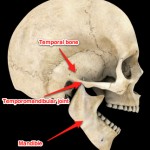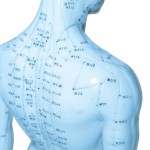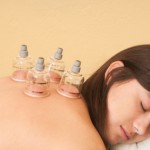Acupuncture treats Temporomandibular Joint Disorders and jaw pain
Trust me. I speak from experience. Acupuncture treats TMJ disorders and jaw pain. I had struggled with bruxism (grinding my teeth) from adolescence until I started studying acupuncture. I’ll be honest, I still have tightness in my jaw, but I know that means I need an acupuncture tune-up. I tried everything you can imagine – bite plates, night guards, TENS units – and nothing gave me results as good as having an intense course of acupuncture and cupping with follow-up maintenance sessions a few times a year.
When I say this, some people respond with, Oh, your TMJ can’t be as bad as mine is if it was resolved that easily. My jaw clicked and popped, it hurt to open my mouth very wide and I ground my teeth so much I chipped more than one. It might not have been the worst TMJD, but it was bad enough.
Acupuncture or acupuncture and herbal medicine work very well on TMJ and jaw pain. But when you add in cupping therapy, you get serious, fast results. Cupping therapy draws out stagnant blood and cellular waste so that fresh blood, oxygen and nutrients can reach the temporomandibular joint and the muscles of the jaw. It does this exceptionally well, bar none. One of the best parts of cupping therapy is it can achieve in one treatment what might take 10 or more acupuncture-only treatments to accomplish. However, cupping therapy does leave some discoloration on the skin for about a week. This is a deterrent for some. For many who are in serious pain, a drastic reduction in discomfort in their jaw is worth the temporary discoloration. For those who aren’t willing to try cupping therapy, acupuncture with or without herbal medicine will make as big an impact, but you will have to be more patient.
What is the temporomandibular joint? What causes TMJD and jaw pain?
The temporomandibular joint (TMJ) is place where your lower jaw (mandible) connects to your skull (the temporal bone, in particular). This joint is a hinge joint. The TMJ is just in front of and marginally above the ear. This joint and the surrounding muscles allow us to open and close the mouth for talking, chewing and yawning. The muscles can pull on the jaw and change its alignment in the joint. This can affect the health of the joint itself and the way the jaw moves.
Temporomandibular joint disorders (TMJD), or temporomandibular disorders (TMD), occur when the jaw, jaw joint and surrounding muscles in charge of opening and closing the mouth become imbalanced or otherwise damaged. Strain and tension in the muscles of the neck and shoulders may also contribute to problems in the muscles supporting the jaw and the TMJ.
Other causes of TMJD are whiplash and neck injury, bruxism (grinding) and clenching the teeth, arthritis in the temporomandibular joint, and stress.
What are the symptoms of TMD/TMJD?
Pain and discomfort can range from mild to severe, and can last for years. TMD is more common in women, and in people between 20 and 40 years old. TMJD may occur on either or both sides of the face.
Other common symptoms are:
- Pain or discomfort in the face, TMJ area, neck, shoulders, and ear. Pain is often worse during chewing, talking, and/or opening the mouth.
- Decreased ability to open the mouth wide
- Locking or sticking in jaw, affecting both open and closed positions
- Clicking, popping, or grinding sounds in the jaw joint when opening or closing the mouth
- Pain or discomfort during chewing
- Facial swelling
How is TMJD diagnosed and treated by a dentist?
A dentist will conduct a physical exam and evaluate the range of motion of the jaw, paying close attention to any sounds that are made in the TMJ during movement of the jaw. A dentist will also examine the patient’s bite, take X-rays, order an MRI or CT scan if needed to evaluate soft tissue (MRI) or get a more detailed view of the joint (CT).
For treatment, a dentist may recommend bite guards or splints, hot and cold therapy, eating soft foods, taking anti-inflammatory medications, movement re-education, and postural awareness.
How does acupuncture treat TMJ disorders and jaw pain?
As I mentioned above, my main treatment strategy is to use acupuncture and cupping therapy together. I also use herbal medicine when patients are interested. I find that acupuncture and cupping therapy together are sufficient. If a patient doesn’t want to have cupping therapy, then I prefer to use acupuncture and herbal medicine together. Of course, all three together are a great combination for strong pain relief.
When treating TMJD and jaw pain, it is really important to understand the source of the problem. Is it stress related? Neck injury related? Muscular? Sinus related? By figuring out these pieces, I can build a better treatment strategy. If there’s neck pain or tension, I can release the neck muscles. Stress-induced TMJD means we need to work on calming the mind and creating coping strategies. Qigong exercises and meditation may be helpful for stress-related TMJ disorders, so I will talk to the patient about that, too. Getting an grasp on the big picture means you get better treatment.
In addition to treating the jaw pain, I do a holistic diagnosis from an acupuncture and Chinese medicine perspective to incorporate whole body or constitutional treatment elements. As the body’s overall balance is restored, diseases, aches and pains will resolve too. This re-balancing is how I get pain relief to last.
To make an appointment with me for treatment, please go to the Appointments page. If you have further questions, feel free to ask me through the Contact page.



